Technology, technique, and knowledge are all essential to effective trademark searching, but how do you find the right balance and approach in your trademark search strategy? In our recent webinar 'How to Ensure Your Search Strategy Is Correct and Appropriate,' experts from Questel and Novagraaf shared practical guidance on how to navigate search projects with ease. Here, we summarize the key points discussed and our three ingredients for success.
Technology provides access to trademark data and algorithms to manage databases effectively; trademark search analysts and trademark attorneys provide the knowledge and insight necessary to target searches and offer analysis or legal guidance on the results. By combining three ingredients—cutting-edge tools, appropriate search techniques, and analyst/legal knowledge—brand owners and law firms can craft a winning trademark search strategy for their organizations that addresses all these challenges and more.
Step 1: Find the Right Technology to Power Your Trademark Search
We asked the attendees of our recent webinar to share their biggest challenges when running trademark search projects. The need to 'think of all variations' emerged as their biggest bugbear (79%), followed by 'too many results' (49%), 'time and complexity of goods and services analysis' (44%), and 'missing transliterations' (40%). These are all hurdles that the right trademark search technology (and provider) should help you overcome.
Artificial intelligence (AI) is a hot topic these days, and for good reason. By integrating sophisticated algorithms and machine learning into our Markify Clearance & Watch Platform, we have been able to provide users with rapid and cost-effective access to the insights they need to make informed decisions about trademark protection.
Our advanced similarity search algorithm is built with a statistical analysis of more than 1 million official cases (where two trademarks have been found confusingly similar) in the U.S. and E.U. and covers orthographical and phonetical similarities as well as all languages and alphabets.
This provides the foundation for users to face the challenges highlighted above, including the ability to 'think of all variations' and avoid 'missing transliterations,' as well as supporting them to filter their results by volume (to avoid 'too many results') and relevancy (overcoming 'time and complexity' in analyzing goods and services).
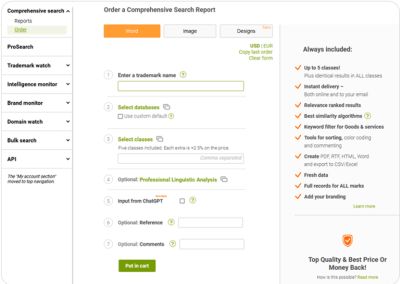 |
Find the right trademark search tool for you!
|
|
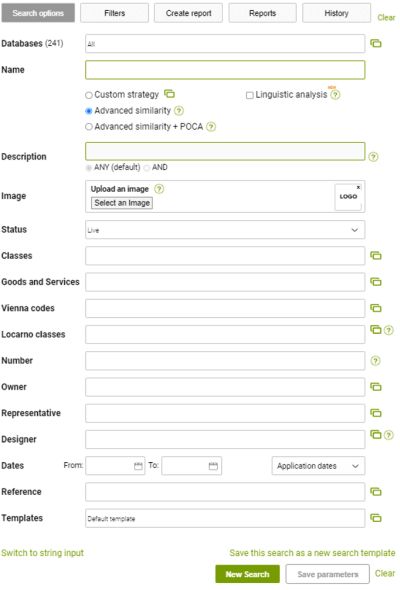 |
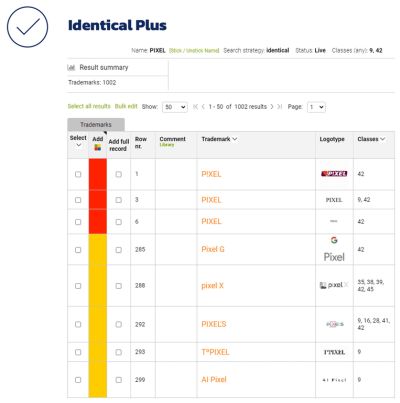 |
We will soon add two new search options to our Markify trademark search technology:
|
|
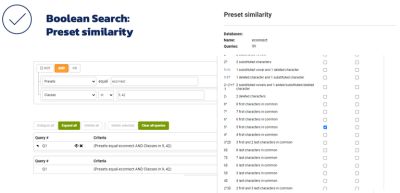 |
Step 2: Maximize Trademark Search with These 5 Techniques
Even with access to the right technology, identifying search criteria can be harder than it sounds. During the webinar, Pascaline Bourreau, Subject Matter Expert for South Europe, and Marie Farges, Head of Trademark SaaS Solutions at Questel outlined five techniques for making trademark search easier and more effective:
1. Identify your search databases:
Markify enables users to search directly in 240+ trademark
databases, including WIPO and EUIPO, with common law databases
(business names, domain names, and application names),
pharmaceutical data, and now design databases also available.
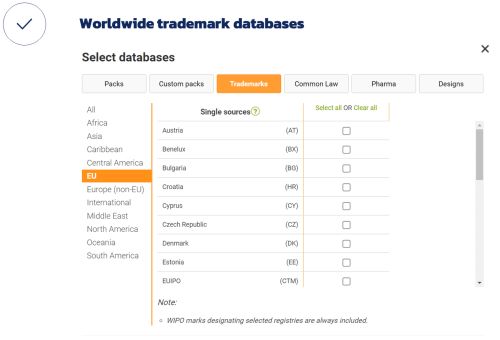
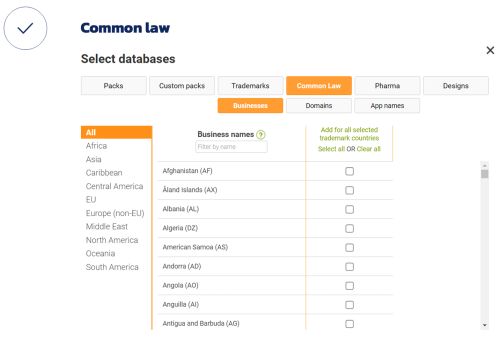
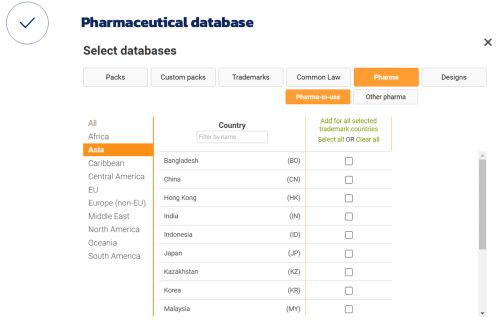
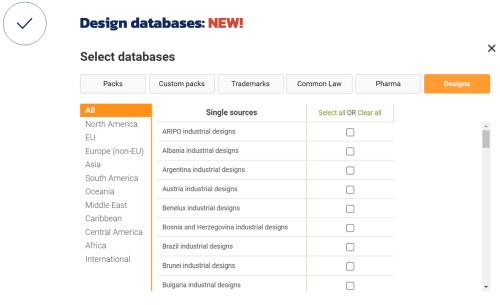
2. Choose your search parameters:
Choose between a 'custom' or 'advanced similarity'
search. With a custom search, you can design your own search in Markify ProSearch" by choosing specific
words, phrases, or wildcards.
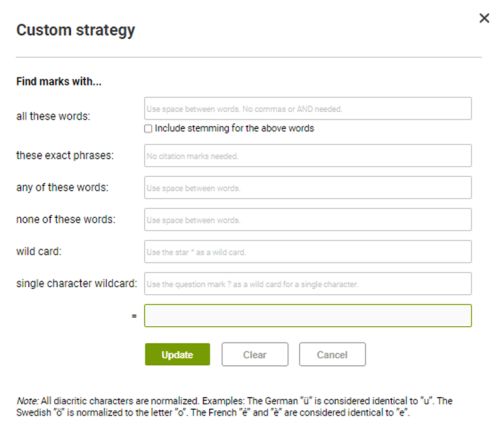
With an advanced similarity search, you can identify identical marks and also harness the full power of Markify's advanced similarity algorithm to identify relevant similar trademarks, including phonetic similarities, transliterations, and translations, as these examples show:
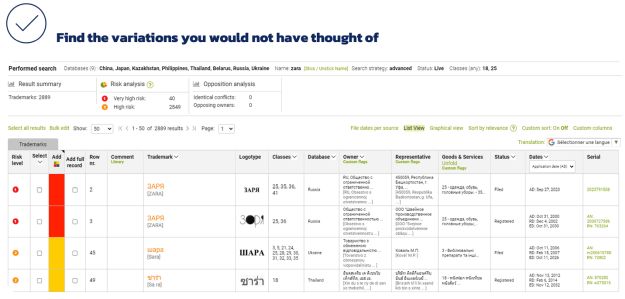
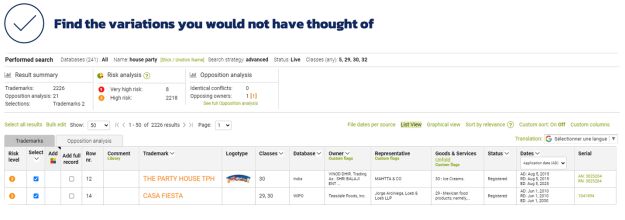
3. Prioritize results by risk level:
It can be challenging to analyze and act on trademark search
results in a non-editable format, such as a PDF. Markify enables
users to filter, highlight, and add comments to results and
organize them by color and risk level for ease of review before
exporting them as a report.
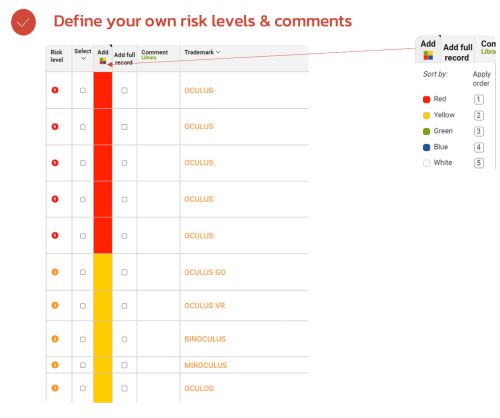
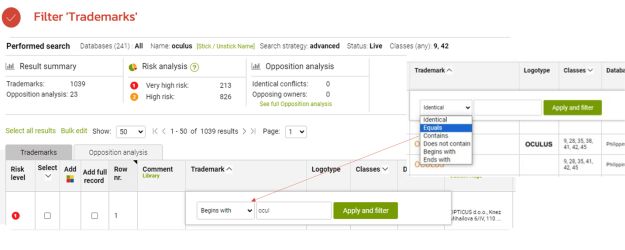
4. Monitor specific goods, services, or
competitors:
Prioritizing results referencing specific goods, services, or
competitors can also streamline search analysis. Markify enables
you to flag specific goods or services, so you can filter results
and automatically receive alerts whenever those terms or company
names appear.
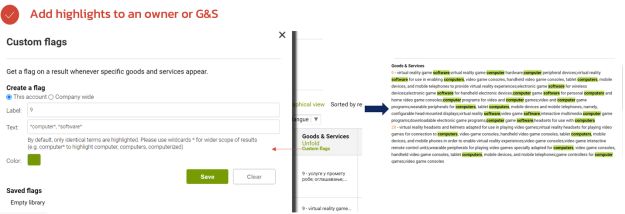
5. Avoid the headache of 'too many results' by
building customizable reports:
You can customize reports easily by yourself! If needed, Markify
team can also customize them to meet your specific needs and in
your preferred format (PDF, HTML, CSV, Excel). However, what
clients find especially helpful is that you can also export the map
view to obtain an immediate overview by country/region.
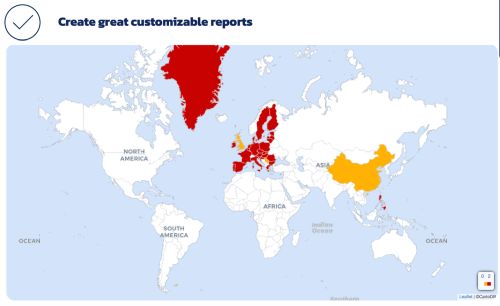
Overcome These Common Pitfalls to Effective Trademark Search
Is your trademark search strategy 'correct' and 'appropriate?' During our recent webinar, Elena Galletti, Head of Trademark Services Architecture at Questel shared five questions to ask yourself to identify avoidable errors in your trademark search parameters:
- Do your search parameters reflect your company's (or client's) risk policy—are you searching in all appropriate geographies/classes?
- Have you focused only on relevant classes, excluding similar ones?
- Does your search cover the associated business risks as well as the legal ones?
- Have you included basic linguistic research for names or parts of names?
- Have you identified the correct criteria for each specific search?
Answering these questions is not always easy, as they require in-depth knowledge of a company's business and appetite for risk, as well as knowledge of legal rulings in your chosen market(s).
Often, when running a search, it can be difficult even to define what 'similar' means, given how reliant the interpretation of that term is on legal precedent. Consider the two following cases shared by our expert speaker from Novagraaf Belgium1, for example:
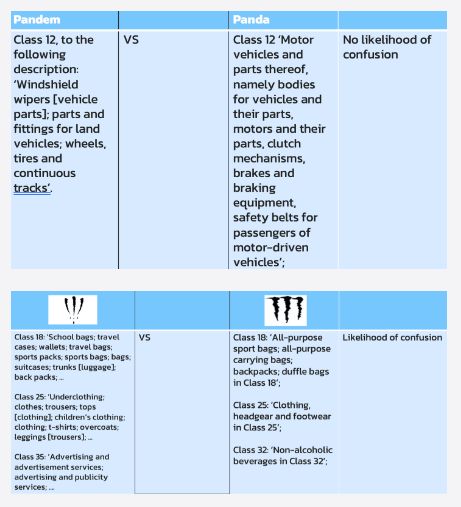
In the first example, the European courts found no likelihood of confusion despite the names sharing the first four letters and being used in somewhat similar/overlapping classes. In the second case, the courts imposed an arguably stricter judgment in finding a likelihood of confusion.
Also, the concept of 'confusingly similar' is far from standardized and harmonized worldwide, with courts in the U.S., Europe, or Asia often ruling in different ways. That's why it is so important to determine a framework for trademark searching that allows for variation and nuance; for example, by specifying the classes, countries, and purpose of the search, as well as relevant products and services, and understanding when to supplement your search algorithm with an analyst or legal opinion.
Step 3: Call On the Knowledge and Experience of a Trademark Search Analyst or Legal Advisor
Do-it-yourself trademark search with a proven tool, such as our Markify trademark search tools, is perfect when, for example:
- you're seeking to clear a large set of trademarks to find the most promising mark,
- considering adding a new element to your well-known house brand that is weakly distinctive, or
- checking you can use a sign for only a short amount of time or in a limited geographical territory.
However, human expertise is fundamental when building search parameters, assessing results, and analyzing or reporting on legal and business risk.
In our experience, the following types of cases should be considered triggers for algorithm and analyst-driven search:
- Very short marks; for example, two or three letters
- Marks consisting of several elements/combined marks
- Marks that are descriptive or diluted.
Analysts can take the pressure off internal teams by building searches, sense-checking algorithm results, and prioritizing findings according to a specific search strategy. But that's not all. By outsourcing the search process, organizations also outsource the responsibility for generating and analyzing results, which can have a major impact in terms of time and deadline management, quality control, and use of internal resources.
In some cases, legal advice may also be necessary to investigate the risks associated with your candidate names, conflicting trademarks, and country-specific implications.
Whatever the reason for your trademark search project, the right resources will be crucial to defining the appropriate strategy. Automated search tools help and can be perfectly sufficient in some cases. However, sometimes, mixing AI-elevated search tools and human intelligence may bring you the best of both worlds. Ideally, the decision should not be driven solely by resource (time and money) considerations but according to the specific project or trademark you are considering.
For further information on our trademark search software and services, watch our recent webinar 'How to Ensure Your Search Strategy Is Correct and Appropriate,' or contact our subject matter experts for dedicated support.
Footnote
1. Questel does not provide any legal advisory services. Legal services are provided by independent IP attorneys on the basis of a separate engagement agreement between you and, if you wish to, a partner IP attorney firm.
The content of this article is intended to provide a general guide to the subject matter. Specialist advice should be sought about your specific circumstances.
